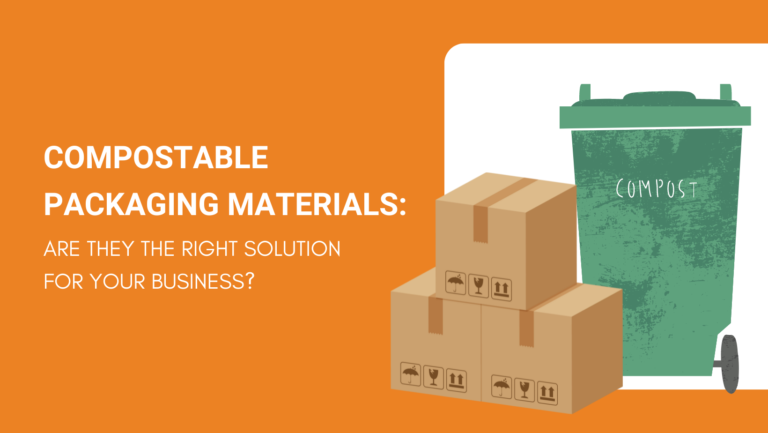Eco-friendly packaging helps conserve the environment and curb the depletion of raw packaging materials.
However, it is not a blanket solution. Rather, it comprises different types of packaging materials with varying ecological benefits.
In today’s blog, we specifically turn the lens onto compostable packaging materials. What are they? What packaging applications are they suitable for? Are they cost-effective?
Come along and let’s get some answers.
What Is Compostable Packaging?
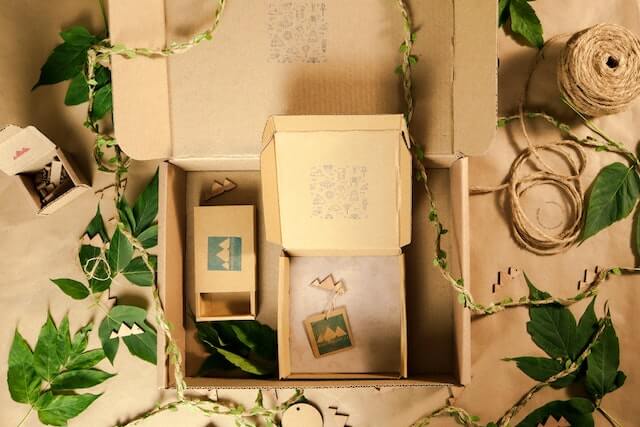
Compostable packaging is packaging made using organic materials such as bamboo, corn starch, or unbleached kraft paper.
These organic materials naturally decompose when disposed of in a natural environment like a farm or a compost pit. They break down into organic nutrients that enrich the soil.
Initially, compostable packaging was mainly only used in the food industry. However, innovation and the need to go green have spurred the use of compostable packaging in other industries such as retail and tech.
How Does Compostable Packaging Work?
Compostable packaging offers just as much functionality as any other type of packaging. However, to understand its true value, let us briefly examine its life cycle and how it works.
Raw Materials and Processing
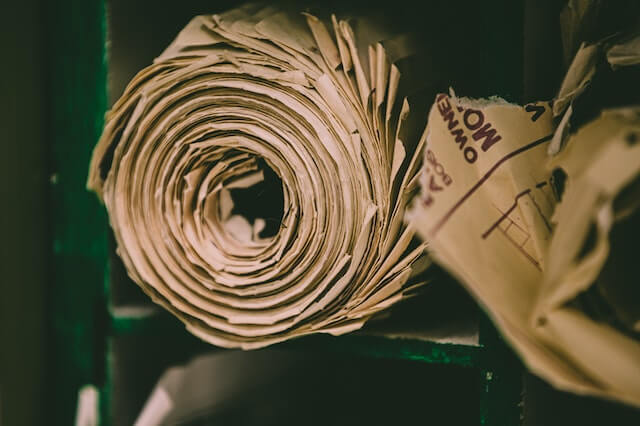
The raw materials used to make compostable packaging include bamboo, wood pulp, cotton, and compostable plastics, among others.
They are processed and designed into different forms of packaging such as kraft paper bags, pouches, boxes, wraps, and more. All chemicals used during the packaging production process, (like labeling inks or adhesives) should, ideally, also be organic.
Usage
As mentioned above, you can use compostable packaging for different types of food and non-food items. You only need to ensure that the packaging is customized to be suitable for your product.
It is equally vital to indicate that your packaging is compostable because:
- It would help your customers know how to dispose of it appropriately.
- It could attract customers to your brand if they prefer to buy from eco-conscious ventures.
Composting
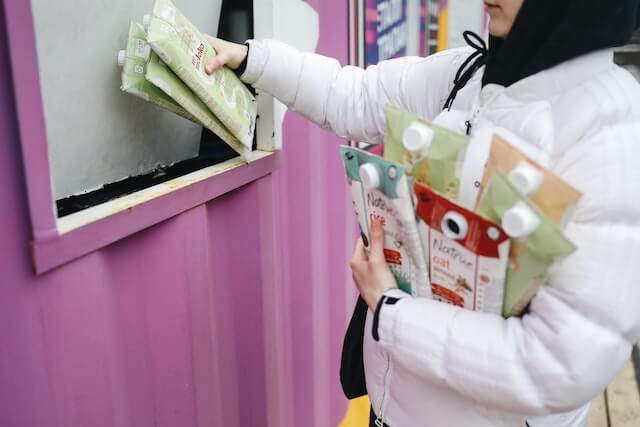
Composting is the final step in the lifespan of compostable packaging. It can be achieved in either of the following ways.
- Your end-users/consumers can dispose of it in a home compost bin where it would organically break down over time. They can then use it to fertilize plants in their farms or homes.
- The packaging waste is collected and composted in an industrial facility with optimized conditions. This is particularly effective for materials like compostable plastics that may not fully break down on their own.
Pros and Cons of Compostable Packaging
Compostable packaging is an outstanding solution but has its flaws. Here is an objective look at both sides of the coin.
Pros
- Brand positivity – using eco-friendly packaging shows customers that you care about the well-being of society and not just your bottom line. This may make your brand more appealing to them.
- Less waste – properly-disposed compostable packaging is easily manageable and does not leave behind tons of waste that negatively impact the environment.
- A safe and valuable life cycle – compostable packaging remains eco-friendly during and after use. Even its production requires less energy and emits significantly lower greenhouse gas than other packaging materials.
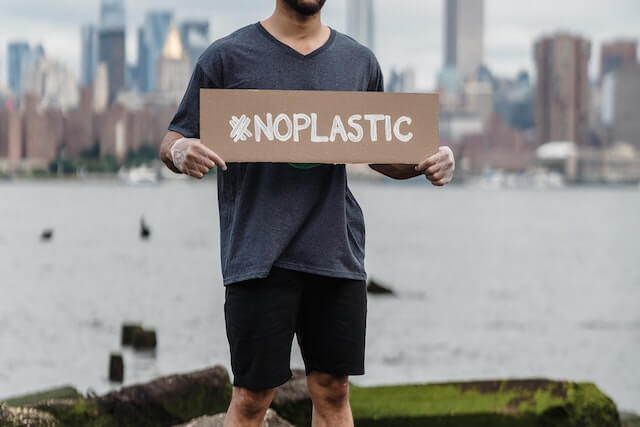
Cons
- Poor disposal negates gains – if compostable packaging is not properly disposed of in a compost bin or facility, it may end up in landfills. It may break down unfavorably due to the wrong conditions and emit toxic gases.
- Limited utility – the organic materials used to make compostable packaging can be degraded by moisture and other components. This may, therefore, limit the kind of products they can be used to package.
- A short lifespan – compostable packaging materials tend to have a shorter lifespan than other packaging materials like plastic which are very durable.
- Higher costs – it often costs more to produce compostable packaging due to the extra effort it may take to only source and use organic materials.
What’s the Difference between Compostable and Biodegradable Packaging Materials?
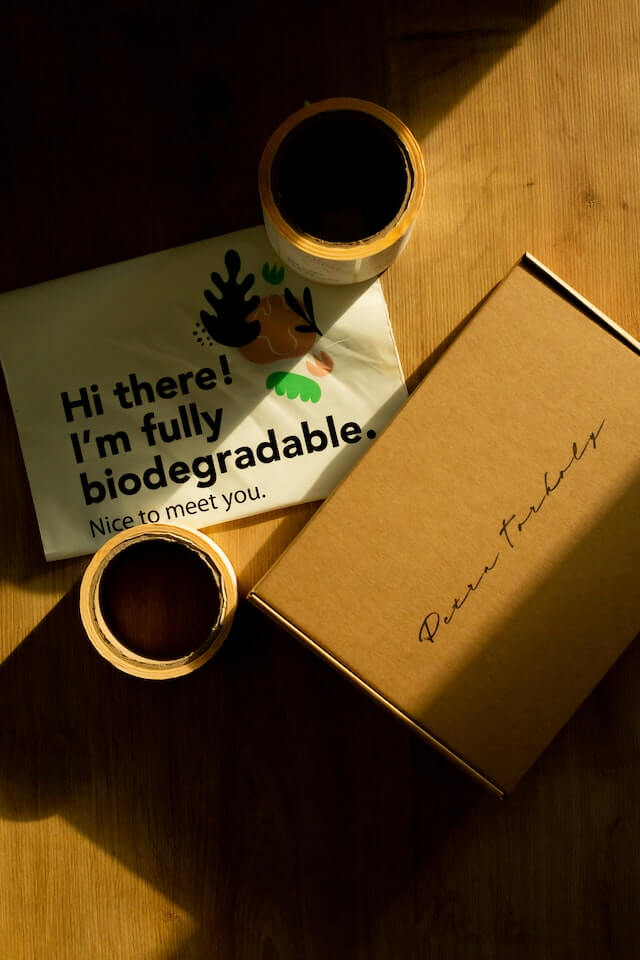
Compostable and biodegradable are often used interchangeably but do not be deceived; they are not the same.
The materials used to make compostable packaging will, under the right conditions, fully break down into organic matter in a short time.
They also do not emit any toxic gases when disposed of properly. This is why the organic matter can be used to fertilize the soil and support the growth of other plants.
In comparison, biodegradable packaging is also made of materials that break down under specific conditions. However, most of them do not break down fully and tend to emit toxins either during or after decomposing.
Further, different biodegradable materials take varying amounts of time to break down. Biodegradable plastic, for instance, may take longer to degrade than bleached paper.
In brief, the differences between compostable and biodegradable packaging can be summarized in the following factors:
- Decomposition – compostable packaging decomposes fully while biodegradable materials break down into microplastics.
- Time – in most cases, compostable materials break down sooner than biodegradable packaging.
- Eco-friendliness – compostable packaging materials may be more eco-friendly because they do not emit toxic gases when well-disposed but biodegradable materials leave behind microplastics that negatively impact the environment.
Are Compostable Packaging Materials Biodegradable?
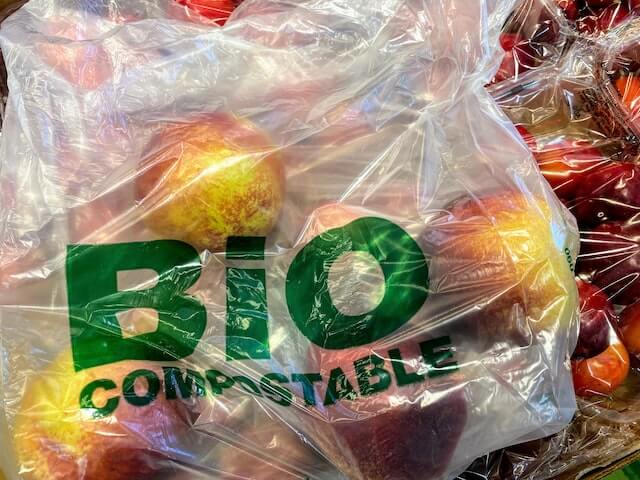
Yes, but let’s define some keywords here for better context.
Compostable is derived from the word ‘compost’, a heap of organic matter that can fertilize the soil.
In contrast, biodegradable refers to anything that natural organisms or natural biochemical processes can break down. Examples include the rotting of wood or the rusting of steel when it is exposed to moisture.
Based on this, all compostable packaging is biodegradable because it can be broken down by natural processes.
However, we can not say that all biodegradable packaging is compostable because some do not fully break down into organic matter. They thus can not be used to fertilize soil (a.k.a composting).
How to Properly Dispose of Compostable Packaging
The benefits of compostable packaging after consumer use depend on one thing: proper disposal. So, if you choose to use it, here are disposal options worth sharing with your customers.

Home Composting
Home composting is a simple system where the occupants of a residence have a dedicated bin or pit for compostable waste.
The bin should ideally:
- Be kept outdoors where the waste can be exposed to natural elements like moisture, heat, and microorganisms.
- Have some green waste (e.g., leftover foods, vegetable peels, etc.) to help catalyze the decay of the compostable materials tossed in the bin.
Additionally, the residents should turn over the contents of the compost bin regularly to ensure that new waste mixes with the old so that the breakdown process works harmoniously.
After weeks or months, the contents decay into a heap of broken-down matter and can be used as fertilizer.
Industrial Composting

Industrial composting is often done at a much larger scale by huge farm owners or commercial compost manufacturers. They collect compostable waste from homes, restaurants, and other establishments to achieve the quantity and variety they need.
The general concept is the same: they heap up the waste and create conducive conditions for it to decompose. However, most industrial composting facilities:
- Sort the waste to ensure there are no contaminants or inorganic matter.
- Use specific bio formulas (i.e. adding various types of waste at certain times) to improve the compost quality or hasten the composting process.
- Use machines to process and regularly mix the huge piles of waste they handle.
Admittedly, not everyone can start composting at such a scale. Still, as an entrepreneur using this type of packaging, you can encourage your customers to dispose of it and other compostable waste in a separate bin for industrial composting entities to collect.
How to Identify Compostable Materials
Packaging manufacturers often enhance compostable materials by adding films of plastic or foil to make the packaging more durable or effective.
Consequently, what you may assume to be a compostable carton, wrap, or pouch may not be. It is thus better to rely on trusted certifications to identify authentic compostable packaging.
Look out for:
TÛV Austria Markings
TÛV Austria is a universally recognized organization. It tests the biodegradation, disintegration, ecotoxicity, and heavy metal content of packaging to determine whether it is compostable.
Based on the results, it also certifies packaging as ideal for either home or industrial composting.
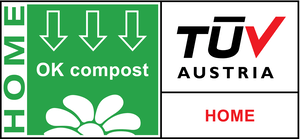
Your packaging will bear the TÛV OK Compost Home or TÛV OK Compost Industrial symbol if it has been duly tested and certified.
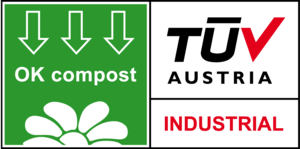
The BPI Logo
The Biodegradable Products Institute equally tests compostable packaging materials based on a regulated list of standards known as ASTM. All packaging that qualifies is certified and should bear the BPI logo.
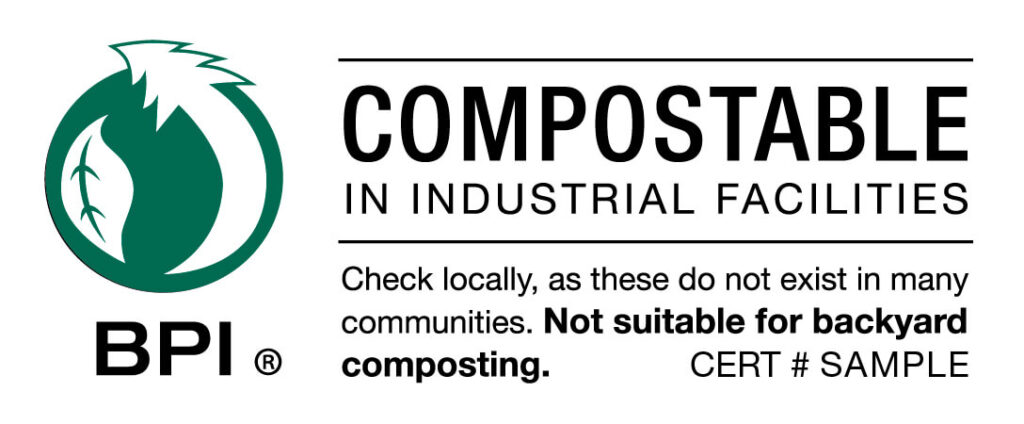
You can also check whether a packaging product is compostable by looking it up on the BPI website.
Is Compostable Packaging More Expensive?
Yes, compostable packaging is more expensive than non-compostable packaging but only in the short run. Here is why.
If you start using compostable packaging, you will notice that most packaging manufacturers quote a relatively higher price for it than options like plastic.
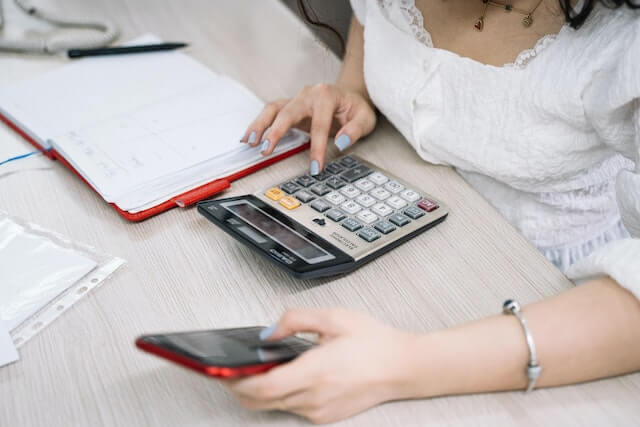
This is because they must source and process organic raw materials to make it.
Yet, in contrast, plastic can cheaply be derived from petro-chemical ingredients. It is also quite flexible in developing different types of packaging.
Nonetheless, in the long run, compostable packaging offers better value. It is thus a better financial choice because:
- Compostable waste can be processed into a value-adding product i.e. fertilizer.
- Compostable packaging does not lead to increased waste that requires complex recycling.
- The healthy life cycle of compostable packaging helps to prevent the depletion of raw materials, resulting in higher packaging in the long run.
Should You Invest in Compostable Packaging for Your Business?
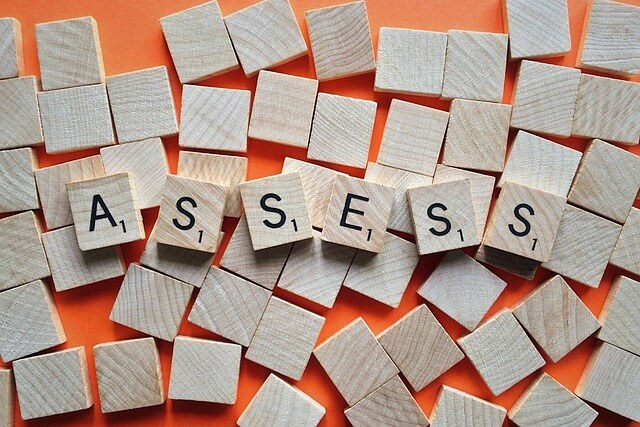
Embracing compostable packaging may:
- Improve your brand image.
- Reduce your greenhouse gas emissions which could, in turn, earn you government incentives in some countries.
- Help you contribute to waste reduction.
- Enable you to still offer your customers user-friendly, trendy, and appealing product packaging.
Subsequently, it may be well worth it to fully adapt compostable packaging solutions. However, if this is not viable, you could also implement it partially.
For example, if compostable packaging options are incompatible with your product, you may not be able to use it as primary packaging. You could, however, opt to use compostable secondary packaging.
It is equally essential to consider your budget vis-a-vis the financial cost of investing in compostable packaging. More so because it often costs more than non-compostable alternatives.
If the costs are beyond your budget, consider:
- Waiting until you have more capital.
- Sourcing the packaging in bulk directly from manufacturers. It may be far more budget-friendly than buying fewer units.
FAQs about Compostable Packaging
Is Compostable Better Than Recyclable?
Yes.
Both compostable and recyclable packaging materials are eco-friendly. Nevertheless, compostable materials are ideal because:
- They support the regeneration of new raw materials, unlike recycling which only refurbishes what is already used.
- Composting costs less than recycling.
- Composting has a smaller carbon footprint than recycling.
- Recycling postpones waste creation but composting eradicates waste by putting it to good use.
- Composting can be done by consumers and industries but recycling is limited to those with the skills and necessary tools.
Is Compostable Packaging Sustainable?
Yes.
Producing compostable packaging requires manufacturers to harvest and process plants regularly. This can seem like a guaranteed path to resource depletion.
However, the beauty of this type of packaging is that when it is disposed of and composted, it becomes fertilizer, supporting the growth of more plants for future use.
Can Compostable Packaging Be Recycled?
No.
The organic materials used to make compostable packaging would begin to disintegrate under the rigorous processes used in recycling.
Recycling would also negate the core idea and some of the benefits of this type of packaging, i.e. to have a full eco-friendly lifespan from raw material to packaging and finally, compost/fertilizer.
To Sum It Up
In the final tally, compostable packaging offers more benefits than drawbacks. You only need to identify the best way to implement it so that it offers optimal gains to your business, your customers, and the environment.
Speaking of implementation, you shouldn’t have to struggle through it alone. You can count on us, at NicheSources, to source quality compostable packaging for your business. We also provide impeccable branding services that would make your products stand out.
Ready to add a new trendy look to your products? Send us your requirements, request a free quote, and we will find you the best solutions for your needs.
